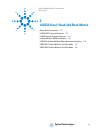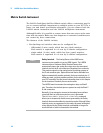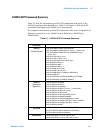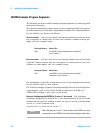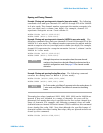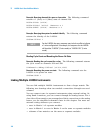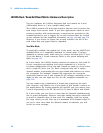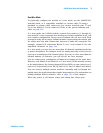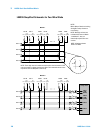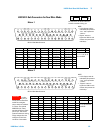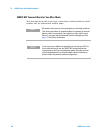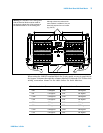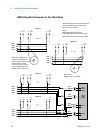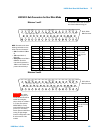118 L4400 User’s Guide
5 L4433A Dual/Quad 4x8 Reed Matrix
L4433A Dual/Quad 4x8 Reed Matrix Hardware Description
You can configure the L4433A dual/quad 4x8 reed matrix for 2- wire
(differential) mode or 1- wire (single- ended) mode.
The L4433A contains 100
Ω in- rush resistors that are used to protect the
reed relays from reactive loads. If you have applications where in- rush
resistors interfere with measurements, connections are provided on the
terminal blocks for you to bypass the in- rush resistors that are located
on the columns. See the simplified schematics on page 120 and page 124.
However, if you choose to bypass the in-rush resistors, the life of the
reed relays that you bypass may be degraded.
Two -W ire Mod e
To physically configure the module for 2- wire mode, use the 34933T- 001
terminal block, or a compatible standard or custom cable. If using a
standard or custom cable, make sure you connect interlock pins 17 and
33 on the Matrix 2 D-sub connector. Refer to the pinout drawing and
table on page 121.
In 2-wire mode, the L4433A module contains two matrices, each with 32
2- wire crosspoint non- latching reed relays organized in a 4- row by
8- column configuration. Every row and column are made up of two wires
each, a high (H) and a low (L). Each crosspoint relay has a unique
channel number representing the row and column that intersect to create
the crosspoint. For example, channel 308 represents the crosspoint
connection between row 3 and column 08 (all columns consisting of two
digits; in this case the digits are 08). See the simplified schematic on
page 120.
You can connect any combination of inputs and outputs at the same
time. However, only Matrix 2 in 2-wire mode of this module connects to
the analog buses. By closing channels 921 and 922 you can connect rows
5 and 6 respectively to the HI (H) and LO (L) lines of ABus1 and ABus2.
In 2- wire mode, you can close no more than 20 channels simultaneously
due to power dissipation. However, note that analog bus relays count half
as much as channel relays in that total. For example, with one analog
bus relay closed, you can close up to a maximum of 19 channel relays. If
you try to close more than the allowed number of channels, you will
receive an error message.




